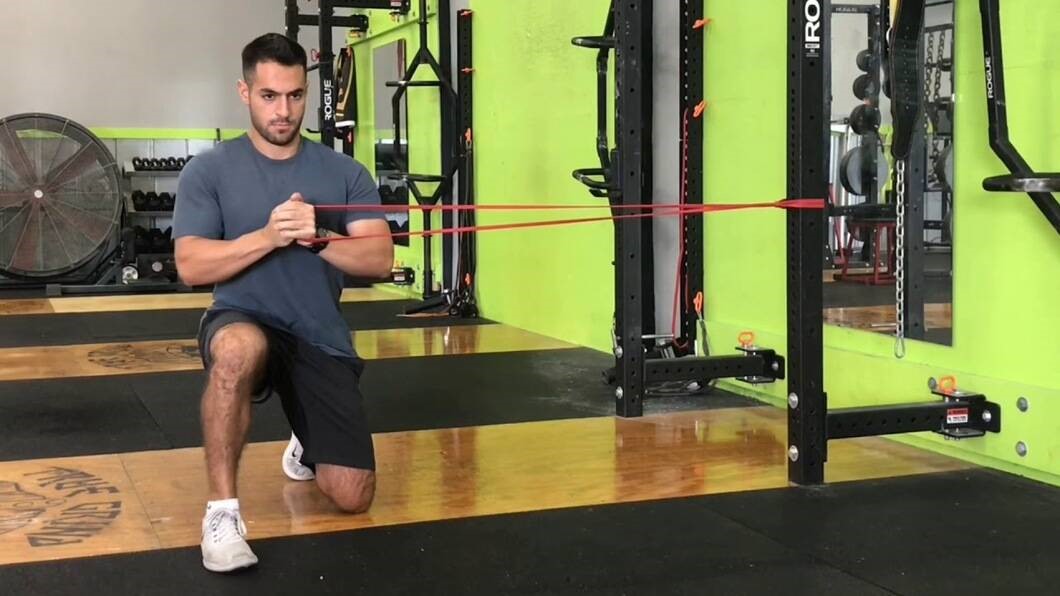Richardbrown
Approved Source

There are countless advantages to including bands in your workouts. Here are 3 of my favorites.
The major drawback of band exercises is that, after a while, they stop making you stronger. Before there is a chance of breaking, they can only be stretched so far and come in so thick. In a workout fail video, a breaking band could appear humorous, but when it's coming at you, not so much.
But when resistance bands are cleverly programmed as deadlift accessory exercises, they can help you develop your strength and technique by focusing on areas of the deadlift where you are weak by offering additional support or resistance. Since bands DO NOT rely on gravity for resistance, you can perform a wide range of exercises at various angles and add bands to many free weight workouts.
Use bands for deadlift accessory exercises to offer diversity to your workout plan and relieve your joints from gravity's relentless pressure. These three banded exercises will help you build and enhance your deadlift, as well as some common deadlift deficiencies.
Three Major Deadlift Weaknesses
You need to deadlift more if you want to grow better at it, but sometimes this won't go you very far. While pushing harder is admirable, working smarter is also important because training with bigger weights causes subtle tendencies to develop in your deadlift that are not apparent when using smaller weights. It's only a matter of time before frustration grows and injury risk rises if you continue to pound away at it.
And neither of those are what you want. And even if your technique is flawless, pulling hard may still expose some common "weaknesses."
Lack of lockout strength: When lifting larger weights, lifters that lack lockout strength frequently stretch their lower back rather than their glutes. Please feel free to lockout with your lower back if you enjoy crushing your spine. Everything will be OK, I'm positive.
Pulling slowly off the floor: The more time you spend at the bottom of your deadlift, the more energy you'll lose for the remainder of the lift and the more likely it is that your lower back will become irate.
Lack of upper back strength: This can cause the spine to round, which causes the bar to stray from the body. If you don't enjoy lower back pain, both are off limits to the majority of lifters.
Three Banded Exercises To Increase Your Deadlift
The following three resistance band workouts can help you if any of the aforementioned situations apply to you or if you just want to strengthen and refine your deadlift technique.
1. Half-Kneeling Split-Stance Pallof Press
The pallof press is fantastic, and this variant is no different. Pallof presses, like plyometric push-ups before benching, "prime" your core muscles to create the tension required to protect your spine before deadlifting.
Additionally, the split stance improves hip mobility since it actively stretches the adductors.
How it helps: If the adductors are "tight," hip mobility becomes an issue because they are essential for flexing and extending the hip. This workout energizes your glutes and actively stretches your adductors to increase their mobility.
How to: Attach a resistance band six to twelve inches off the ground. Grab the band firmly with both hands and lean side on to the anchor point while tall kneeling. Straighten the leg that is closest to the anchor point while maintaining tension in the band to feel your adductors stretch. Press out and in while keeping your torso front in place while holding the band by your sternum.
Programming tip: Before deadlifting, stimulate your core muscles rather than exhaust them. The ideal starting point is 15 to 30 seconds per side. For instance:
1A. Half-kneeling Split Stance Pallof Press: 15 to 30 seconds on each side
1B. Deadlift variation: 3 to 5 reps.
2. Squat Stance Deadlift With Horizontal Band Resistance
Horizontal Band-resisted RDL
Strength in the lats and upper back is crucial when deadlifting from the floor. A straight bar route and a neutral spine are maintained by keeping them both engaged. This variation's horizontal resistance encourages a tight beginning posture, requiring you to remove the bar's slack and maintain the barbell's proximity to your body throughout the concentric and eccentric contraction.
How it helps: If you struggle to maintain a tight upper back and lats when lifting big objects, try this.
How to execute: Before adding plates, fasten a looped band low and wrap it around the center of the bar. Perform a hip hinge, grab the bar with an overhand grip, and pull to your shins while standing 12 to 18 inches away from the bar. To stand up straight, tense up and deadlift. Your starting point is here. As you would normally, perform an RDL while maintaining the barbell close to your torso.
Programming tip: If you're having difficulties maintaining tight, substitute this for your regular deadlifts on upper body and squat days. Try this superset if you enjoy burning your upper back and hamstrings.
1A. Band resisted deadlift: Six to 12 reps (use 70-80% 1RM)
1B. Hamstring curl variation: Eight to 12 reps
3. Resistance Band Broad Jump
Similar to the conventional deadlift, broad jumps increase leg strength and explosive force in the horizontal plane, which can assist increase speed off the ground and lockout strength. Because the leg and core muscles must contract quickly to produce maximum force with each jump, the resistance band broad jump enhances the fast-twitch muscle fibers' ability to react swiftly and so increase speed and strength.
How it helps: By emphasizing a smooth landing after each jump, they help reduce knee injuries. Because the band slows down your landing, this lessens the stress on your knee and hip joints.
How to: Put a band with loops at hip level. Enter the band, then fasten it around your waist. Move forward until you feel the band stretch. Jump as far forward as you can while maintaining your upright posture by hinging back until you feel a stretch in your hamstrings. Slowly make your way back, then start over.
Programming tip: Set the number of repetitions based on your leaping height and "pop." Power exercises like these are best performed when you're fresh for optimal efficiency, so practice them after your warm-up and before your strength training. For instance:
1. Resistance band broad jump: Four to six reps
Rest 1 to 2 minutes and perform a total of 2-3 sets








